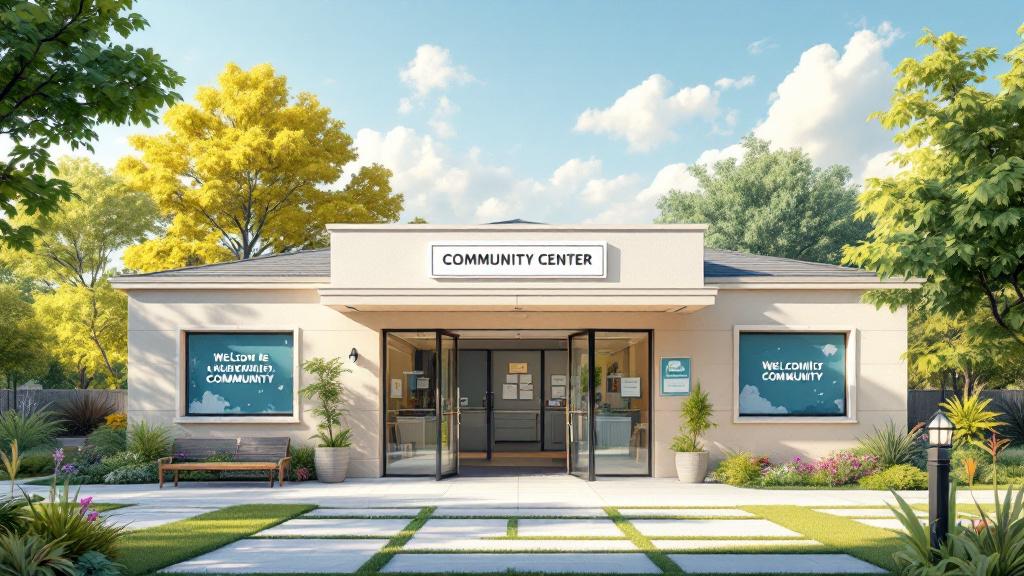Fostering Diversity and Equity in Communities
Community programs that support inclusion and diversity play a crucial role in shaping equitable, respectful, and vibrant environments. These initiatives encompass organizational policies, educational efforts, community engagement, and systemic reforms designed to ensure that all individuals, regardless of their backgrounds or abilities, are respected, represented, and empowered to participate fully in society.
Organizational Initiatives Promoting DEI
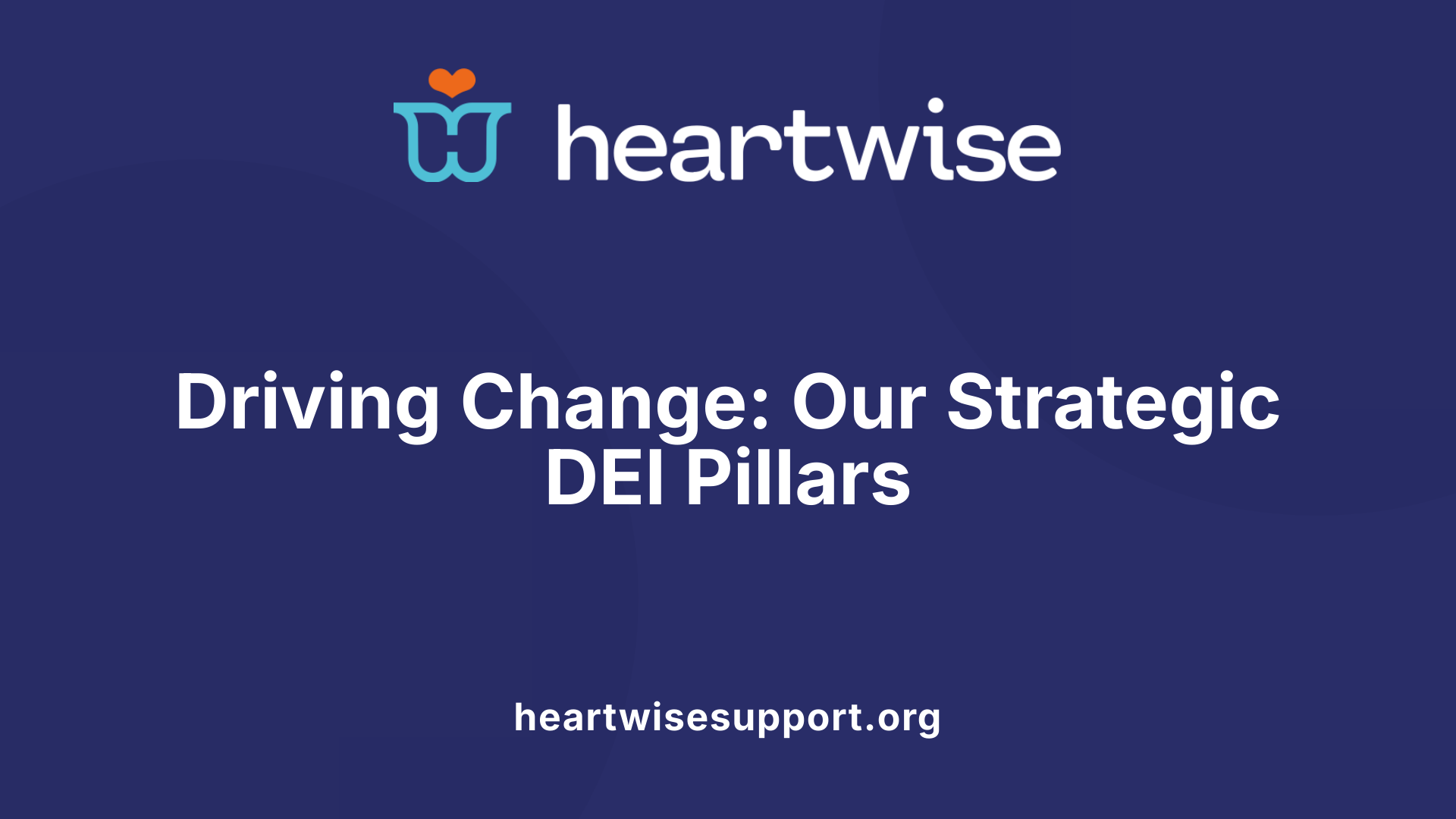 Over the past three years, Community Health Network has significantly expanded its efforts to advance diversity, equity, and inclusion (DEI). The organization has implemented a comprehensive DEI strategic plan centered around six key pillars, each with specific goals to integrate inclusive practices into every aspect of its operations. This strategic framework guides initiatives aimed at fostering a culture that respects and values diverse perspectives.
Over the past three years, Community Health Network has significantly expanded its efforts to advance diversity, equity, and inclusion (DEI). The organization has implemented a comprehensive DEI strategic plan centered around six key pillars, each with specific goals to integrate inclusive practices into every aspect of its operations. This strategic framework guides initiatives aimed at fostering a culture that respects and values diverse perspectives.
Leadership plays a crucial role in these efforts. The President and CEO, along with the Chief Physician Executive, have publicly committed to health equity by emphasizing the importance of reducing health disparities and promoting an inclusive environment for caregivers and patients alike. Their leadership statements reinforce the organization’s dedication to fostering an organizational culture that prioritizes fairness and inclusivity.
Community Health Network also promotes active engagement through various programs and partnerships. They invite members to participate in pledges supporting DEI, emphasizing the importance of creating safe, welcoming environments. Their community outreach efforts include events like the Black Men in White Coats Youth Summit, Indy Pride participation, and health fairs targeting minority communities, aiming to reduce barriers and improve health outcomes.
Additionally, workforce diversity is a central focus. The organization boasts over 75% of its 125+ employees identifying as Black, Hispanic, or People of Color. They support numerous employee resource groups such as Ability Allies, Latino Allies, LGBTQIA+ caregivers, Veterans, and Women Leaders, providing spaces for support, mentorship, and advocacy. Their commitment extends to promoting race and gender equity within their staffing and leadership, with plans to deepen representation in senior roles.
Diversity and inclusion programs like these are vital across sectors. They are designed to foster fair treatment, representation, and participation of individuals from varied social and cultural backgrounds. These initiatives are more than policies—they create a culture of belonging where every voice is valued. Such programs encompass training, policy reforms, community engagement, and targeted recruitment efforts, all working together to build workplaces and communities that are equitable, respectful, and innovative.
| Focus Area | Examples | Goals & Impact |
|---|---|---|
| DEI Strategic Plan | Six pillars guiding implementation | Systematic integration of DEI principles across organization |
| Leadership Commitments | Public statements, health equity pledges | Reinforce organizational importance of inclusivity |
| Workforce Diversity | Employee resource groups, representation | Close gaps in representation and leadership |
| Community Outreach | Youth summits, pride participation, health fairs | Reduce disparities and enhance community relations |
| Organizational Programs | DEI training, cultural competence initiatives | Foster an inclusive organizational culture |
| Broader Impact | Collaboration with local vendors, accreditation as B Corporation | Promote economic opportunity and social responsibility |
Diversity and inclusion initiatives are essential in healthcare and corporate sectors alike. They work to address systemic inequities, foster cultural competence, and cultivate environments where all individuals can thrive. As organizations like Community Health Network demonstrate, sustained commitment at the leadership level, combined with community engagement and workforce diversification, is vital to making lasting change.
Community Outreach and Engagement Strategies
What are examples of inclusive communities?
Inclusive communities are places where everyone feels valued, respected, and able to participate fully. Such communities actively promote diversity and work to eliminate barriers that might prevent some groups from having equal opportunities.
One example is workplaces that prioritize diverse hiring policies and provide ongoing bias and cultural competence training for staff. These efforts help ensure fair representation across different races, genders, age groups, and backgrounds.
Cultural festivals and centers also play a vital role by celebrating various traditions, fostering social cohesion, and encouraging mutual understanding among community members. Events like multicultural festivals or heritage days create opportunities for learning and sharing.
Accessibility initiatives are crucial for inclusion too. This includes barrier-free transportation, buildings designed with universal access in mind, and accommodations in public spaces, making sure that people with disabilities can participate fully in community life.
Educational institutions set an example through inclusive policies—offering accessible learning materials, support for neurodiverse students, and programs that recognize intersectional identities. These environments promote a sense of belonging for all students.
Local governments and organizations contribute by enacting policies such as anti-discrimination laws, affirmative action, and equity-focused programs. They work toward systemic change, ensuring that diversity is reflected not just socially but structurally.
By implementing these practices, communities become more equitable, vibrant, and welcoming, benefiting everyone through increased social cohesion, economic opportunity, and shared understanding.
| Example of Inclusive Community | Description | Additional Notes |
|---|---|---|
| Diverse hiring policies | Recruiting from varied backgrounds and offering bias training | Ensures representation and fairness |
| Cultural festivals | Celebrating different cultural traditions | Promotes understanding and respect |
| Accessibility initiatives | Universal design and accommodations | Facilitates participation for people with disabilities |
| Inclusive education | Support for neurodiverse students and accessible materials | Creates welcoming learning environments |
| Policy reforms | Anti-discrimination laws and affirmative action | Addresses systemic barriers |
Creating communities that are truly inclusive requires ongoing effort across multiple sectors. By combining these approaches, communities can foster environments where everyone can thrive.
Promoting Diversity and Inclusion Amid Community Activities
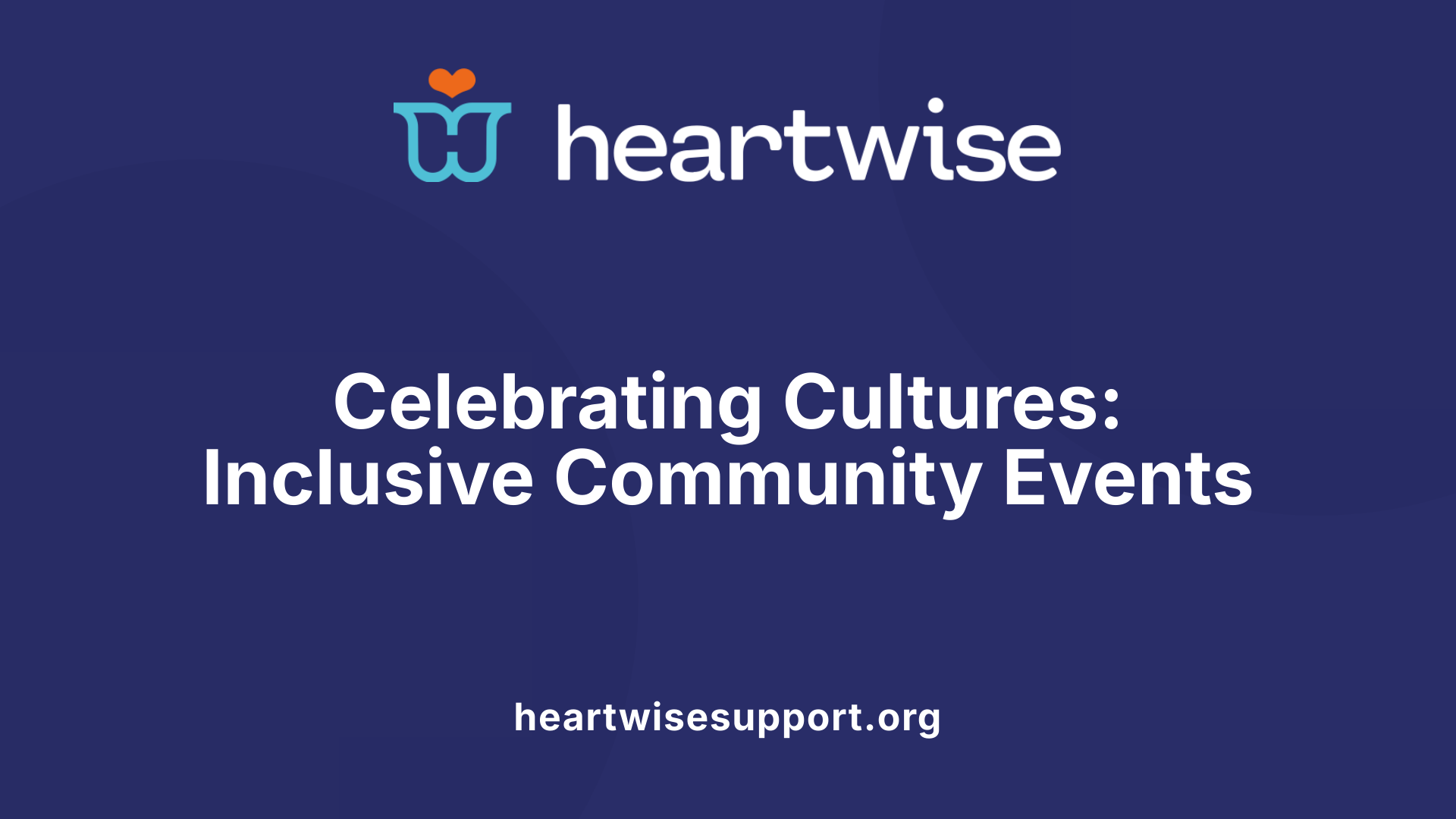
How can communities promote diversity and inclusion?
Communities play a vital role in fostering environments where everyone feels valued and respected. One effective way to promote diversity and inclusion is by creating spaces that encourage safe dialogue on social issues. These spaces allow community members to share their experiences and perspectives on topics like mental health, LGBTQ+ rights, racial justice, and more, without fear of judgment or discrimination.
Community organizations often host cultural celebrations and educational events that highlight the richness of different backgrounds. For instance, events like multicultural festivals, heritage months, or awareness days help educate others and celebrate diversity. Such activities not only increase cultural awareness but also promote a sense of belonging and pride among community members.
Advocacy for inclusive policies is also essential. Communities can influence local and institutional policies to ensure equitable access to services, employment opportunities, and representation. Supporting initiatives that address systemic barriers helps build more equitable communities for all.
Community activities that focus on open dialogue enable understanding and help reduce prejudice. Events like forums, panel discussions, or community talks bring attention to important social issues and empower members to participate actively in creating positive change.
Furthermore, involvement in diversity-focused groups and educational programs nurtures a culture of empathy and allyship. These efforts reinforce the message that differences should be celebrated, and everyone has a role in promoting inclusivity.
In summary, communities can actively promote diversity and inclusion by fostering respectful conversations, organizing cultural and educational events, advocating for fair and inclusive policies, and encouraging active participation from all members. Consistent efforts rooted in empathy and understanding cultivate safer, more supportive environments that benefit everyone.
Community Inclusion Activities for Individuals with Disabilities
What are community inclusion activities?
Community inclusion activities are personalized opportunities that allow individuals with disabilities to be actively involved in their local neighborhoods. These activities are thoughtfully designed to promote interaction with community members who are not paid caregivers, fostering authentic social connections and independence.
They encompass a wide range of experiences such as recreational outings, sports, arts and crafts, educational classes, and social events. For instance, organizations like Sequoia Therapeutic Recreation organize inclusive programs that cater to diverse interests.
Support services play a vital role by providing assistance tailored to each individual’s needs, gradually reducing this support as confidence and skills grow. This approach encourages independence while ensuring safety and engagement.
Effective community inclusion is guided by person-centered planning, which emphasizes listening to and prioritizing what the individual values and desires. Activities are typically accessible via public transportation, inclusive, and designed to avoid segregation or isolation.
Through these efforts, individuals with disabilities can build stronger community ties, participate in meaningful activities, and develop skills that support a more independent and engaging life.
Why are these activities important?
Community inclusion activities help break down barriers faced by individuals with disabilities. They promote social integration, foster friendships, and increase community awareness and acceptance.
By engaging in everyday activities, individuals with disabilities gain confidence, improve their social skills, and enjoy a sense of belonging. Moreover, these programs contribute to building more inclusive communities where everyone has the opportunity to thrive.
How do organizations facilitate community inclusion?
Organizations support community inclusion through personalized planning, accessible locations, and volunteer engagement. They focus on creating low-barrier environments and encouraging participation with peers without disabilities.
Support staff are trained to provide appropriate assistance during activities, always aiming to empower individuals to do as much as possible independently. Over time, this support is gradually phased out to foster true independence.
Supporting community inclusion requires a collaborative effort among service providers, community members, and families to ensure accessible transportation, equitable opportunities, and ongoing encouragement.
Additional Resources
For those interested in exploring more, searching for 'Community inclusion programs for people with disabilities' online will lead to a variety of programs, resources, and organizations dedicated to advancing accessible and inclusive community experiences.
Educational Programs Supporting Diversity and Inclusion
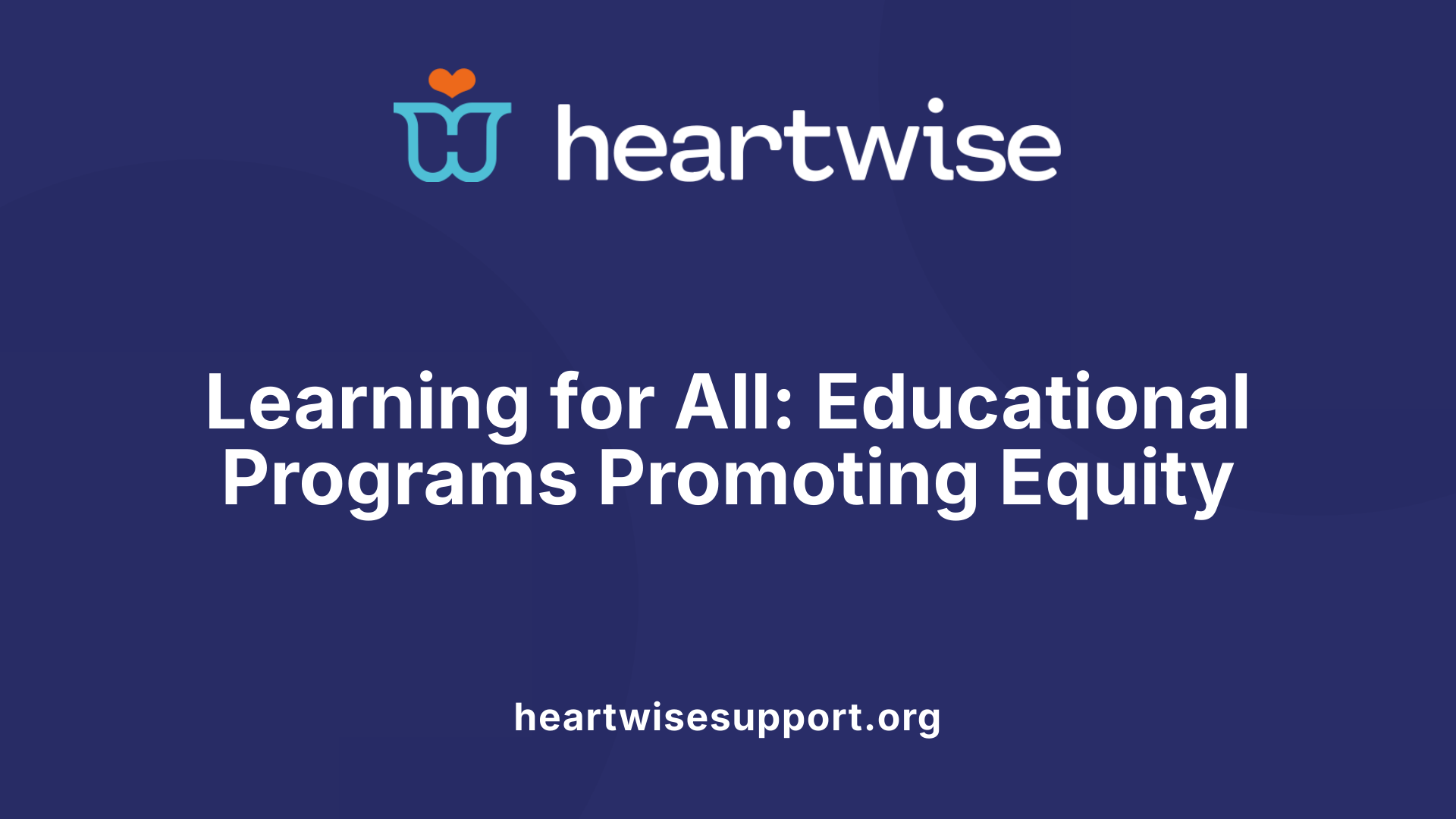
What are diversity and inclusion programs?
Diversity and inclusion programs are initiatives implemented by organizations and educational institutions to promote fair treatment, equitable participation, and representation of individuals from a wide range of backgrounds. These programs aim to ensure that people of different races, genders, ethnicities, abilities, sexual orientations, and other identities are not only present but also actively engaged.
In schools, universities, and workplaces, such programs include policies, training sessions, and community activities designed to foster a culture of respect, understanding, and belonging. They help break down barriers caused by unconscious bias and systemic inequalities, encouraging environments where everyone feels valued.
For education specifically, these efforts involve developing culturally responsive curricula, training future teachers in inclusive teaching methods, and supporting students of diverse backgrounds. The ultimate goal is creating spaces where all individuals can thrive and contribute fully.
Curriculum development
A fundamental aspect of supporting diversity and inclusion is curriculum development. Schools and universities are revising their academic content to reflect diverse perspectives and histories. This includes integrating texts from different cultures, histories related to marginalized groups, and discussions on social justice issues.
Such curricula help students understand and appreciate diverse worldviews, fostering empathy and critical thinking. Programs like the MIT Summer Research Program and university diversity initiatives often focus on expanding academic content to include underrepresented voices and experiences.
Teacher training on inclusive practices
Equipping teachers with the skills to foster inclusive classrooms is essential. Many institutions offer professional development courses that focus on understanding implicit biases, culturally responsive teaching, and strategies for engaging all students.
For example, programs at Cascadia College and Michigan State University include courses and workshops designed to embed diversity concepts into everyday teaching practices. These trainings empower educators to create supportive learning environments and address inequities proactively.
Support for students of diverse backgrounds
Supporting students from varied social, cultural, and economic backgrounds involves both targeted resources and inclusive policies. Schools implement mentorship programs, affinity groups, and community engagement activities to promote a sense of belonging.
Initiatives like City and Country School’s anti-racist forums and Suffolk University’s affinity groups provide spaces for dialogue and community building. Moreover, programs such as the Cascadia Scholars enhance access and success for underrepresented students through scholarships, mentorship, and tailored academic support.
| Program Type | Focus Area | Examples & Goals |
|---|---|---|
| Curriculum Development | Integrate diverse histories & perspectives | MIT’s STEM programs address underrepresentation; K-12 inclusive curricula |
| Teacher Training | Equip educators with inclusive strategies | Michigan State’s E&I courses, City & Country School’s anti-racist forums |
| Student Support | Mentorship, affinity groups, community engagement | Suffolk’s diversity programs, Cascadia Scholars, City & Country’s parent forums |
Engaging in these educational initiatives not only benefits individual learners but also helps cultivate inclusive communities that value diversity. As institutions continue to evolve their approaches, fostering an environment of equity and understanding becomes a shared responsibility for educators, students, and administrators alike.
Search this topic
Educational initiatives on diversity and inclusion in schools and universities.
The Impact and Future of Community DEI Efforts
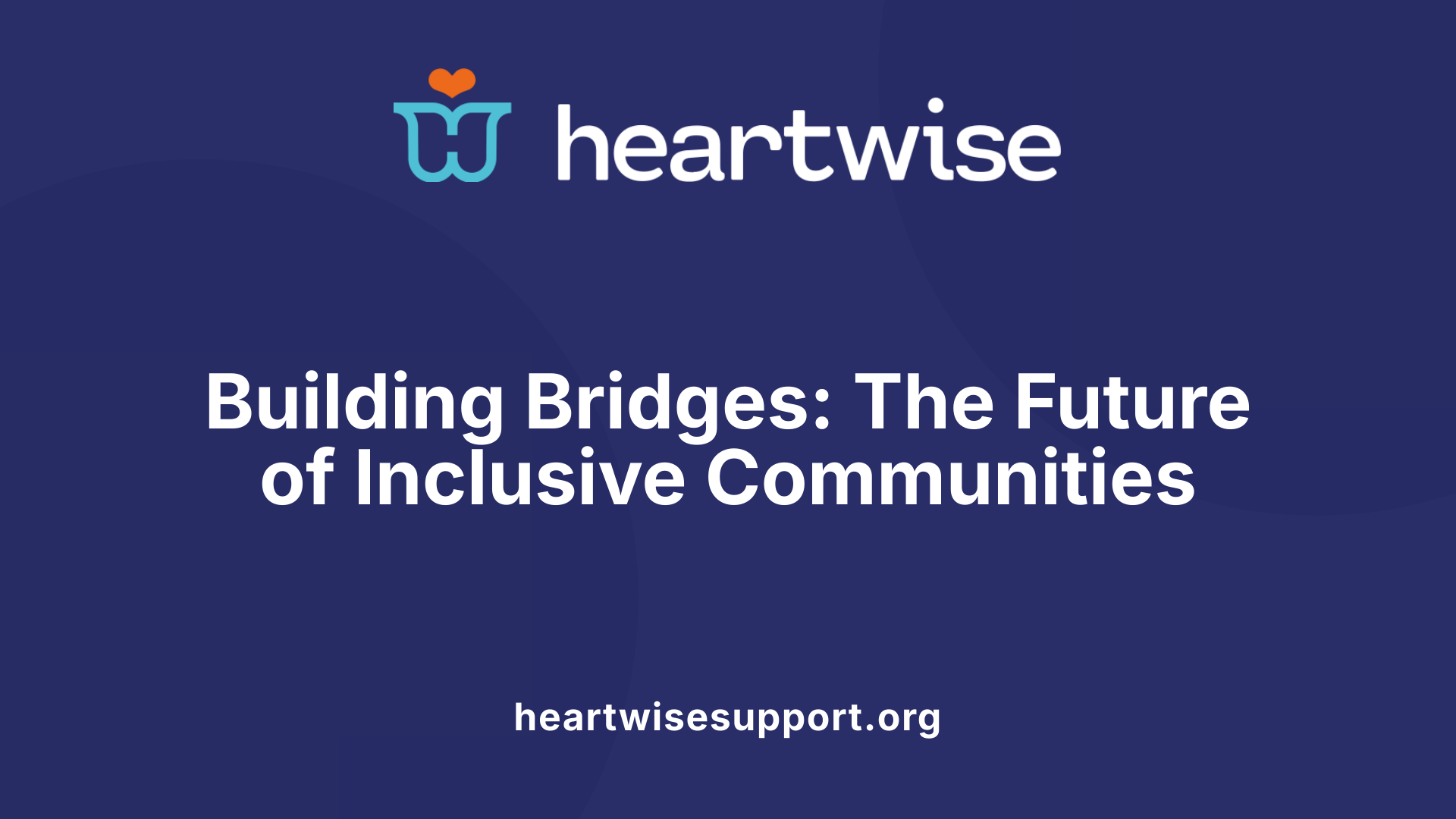
What are community inclusion activities?
Community inclusion activities are dedicated efforts to allow individuals with disabilities and other marginalized groups to partake fully in social, educational, recreational, and personal growth experiences within their neighborhoods and communities. These activities aim to foster genuine relationships with community members who are not paid to be involved, thereby promoting true social integration and independence.
They are accessible through public transportation and tailored to each person's interests, ensuring participation is convenient and meaningful. Instead of segregating individuals, these activities promote interaction with diverse groups without disabilities, encouraging a sense of belonging. Examples include inclusive sports, arts and crafts, social outings, and educational programs organized by organizations such as Sequoia Therapeutic Recreation.
Support services in community inclusion involve helping individuals build relationships and develop skills for independence. Staff members support participants at first, but gradually reduce assistance as confidence and capabilities grow, ensuring individuals are empowered to engage fully. Person-centered planning customizes these activities to align with each person's unique goals, needs, and preferences.
Understanding the importance of sustained community engagement is vital. Long-term strategies for inclusion extend beyond initial efforts, aiming to embed DEI principles into the core operations of organizations, schools, and local governments. These strategies ensure ongoing support, resource allocation, and policy development that foster equitable access and participation.
In the broader context, community inclusion is interconnected with systemic change efforts, which address structural barriers rooted in policies, housing, employment, and healthcare. Continuous assessment, such as climate surveys and program evaluations, helps organizations adapt and improve their approaches, ensuring DEI initiatives are effective and comprehensive.
By focusing on systemic change and diligent evaluation, communities can create a culture where diversity thrives, equity is realized, and all members can participate fully and equally. This sustainable approach promises to foster inclusive environments where everyone has the opportunity to contribute, grow, and belong.
The Path Forward for Inclusive Communities
Building and sustaining inclusive and diverse communities require comprehensive efforts across organizational, community, and educational levels. By investing in robust programs that foster understanding, representation, and participation, societies can unlock their full potential. As organizations deepen their commitment to DEI through strategic planning, community outreach, educational advancements, and systemic reforms, they pave the way for a future where every individual belongs, contributes, and thrives.
References
- Diversity, Equity and Inclusion | Community Health Network
- Diversity, Equity & Inclusion Our Pledge | Kids In The Game
- About Community Inclusion - AUCD
- Inclusive Communities: Home
- Supporting a Diverse Community | MIT for a Better World
- How DEI Programs Can Impact Your Community | Region Five
- Diversity, Equity, Inclusion, and Belonging - NAIS

